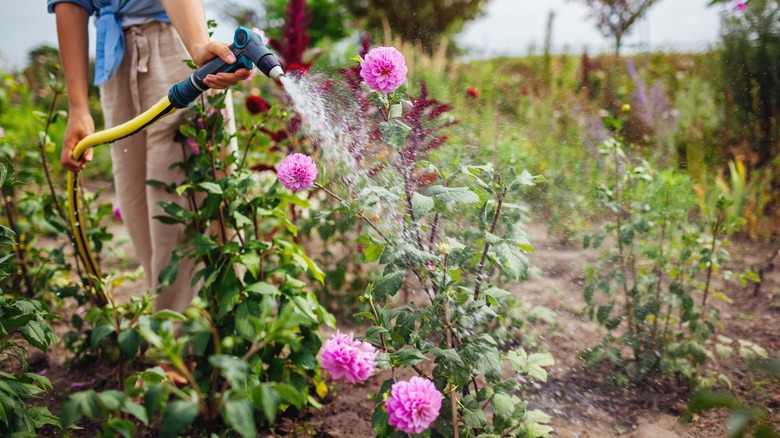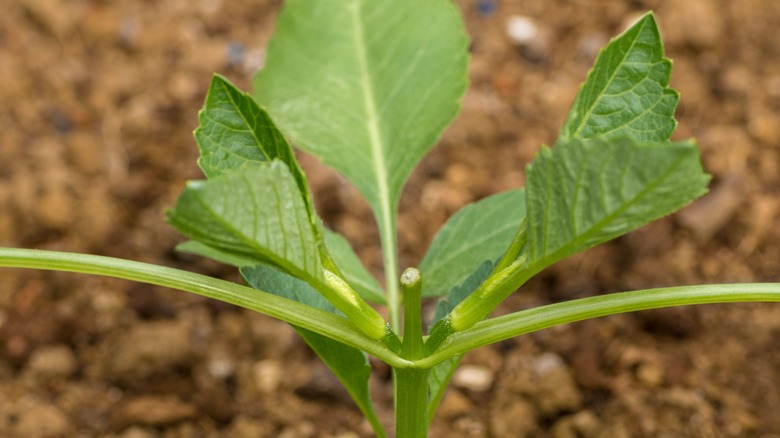Avoid Making This Fertilizer Mistake When Caring For Your Dahlias
One of the best things about growing dahlias (Dahlia pinnata) is how readily they produce tubers, which are the potato-like roots of the flower. These tubers multiply in the soil over the course of a growing season, allowing you to increase the number of captivating blooms from one season to the next. But if doubling and even tripling your tuber crop from year to year is high on the priority list, don't make the mistake of fertilizing your dahlia plants midway through the summer.
You should fertilize your dahlias once a month while they are growing, then stop after July. It may be tempting to keep going, but fertilizing too late in the season can actually have the opposite effect to what you want, hindering the development of tubers and thwarting your plans to fill every possible garden space with these show-stopping flowers. Before you add any fertilizer, always test your soil's pH level. Dahlias thrive in soil with a pH between 6.5 and 7. If needed, you can use cow or steer manure or a commercial fertilizer that is low in nitrogen. They also flourish by applying a secret ingredient: Epsom salt.
What you do with your dahlias after the summer depends on where you live. They can be treated as perennials and left in the ground to rebloom for those living in zones 8 to 10, while gardeners in colder zones (7 and below) will need to dig them up and store them over winter in a location that stays between 32 and 50 degrees Fahrenheit. Once the soil warms up to 60 degrees, they should be ready for the next growing season.
Pinch dahlias for more blooms
If fertilizer is a mistake later in the season, what does work to encourage more blooms? A better way to multiply the flowers is to pinch back your growing dahlias. It seems counterproductive, but it works. Once dahlia tubers are planted, keep an eye on their growth and watch for three to four sets of true leaves to appear from the central stem. Take a pair of clean garden snips and cut the main stem right down to the joint above the third or fourth set of leaves, effectively topping the plant. Removing that central stalk will force the dahlia to branch from a lower point in the plant, thus creating more flowers.
No tools? No problem. You can achieve the same results by using the nail on your thumb pressed against your pointer finger with the stem of the plant caught between the two. This explains why many refer to the practice as "pinching," since you're essentially giving the flower a little pinch.
You can further multiply dahlia flowers by using those discarded stems to propagate new plants. Take the snipped out cuttings and remove any leaves so that one set on top is all that remains. Dip each cutting in some rooting hormone, then poke a hole into a small pot with soil, and tuck them inside so that the leaves remain at the soil line. Place the seedlings in a sunny location and keep them moist until you see evidence of small white roots by the pot's drainage hole. At this point, they can be planted out in the garden.

